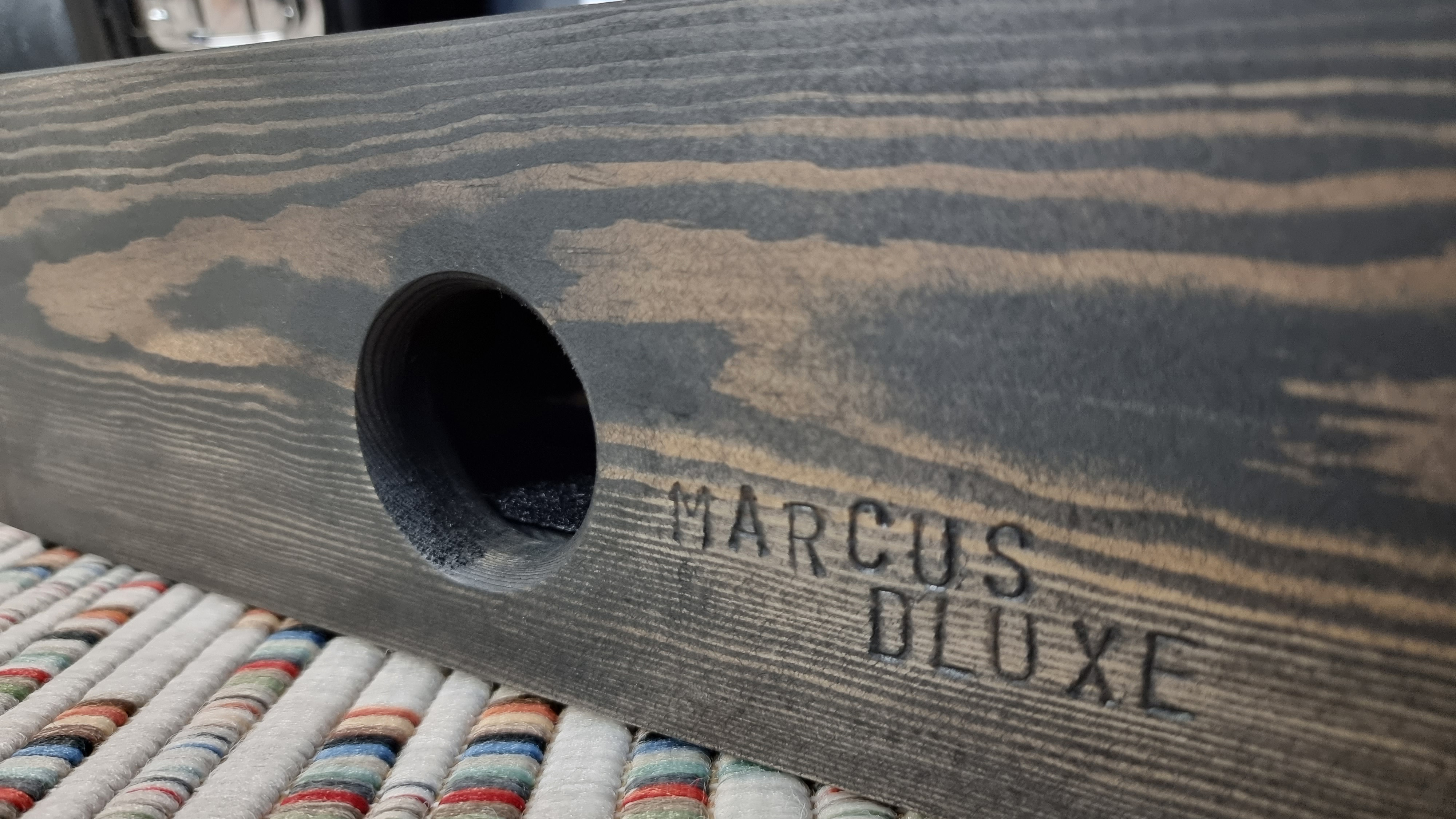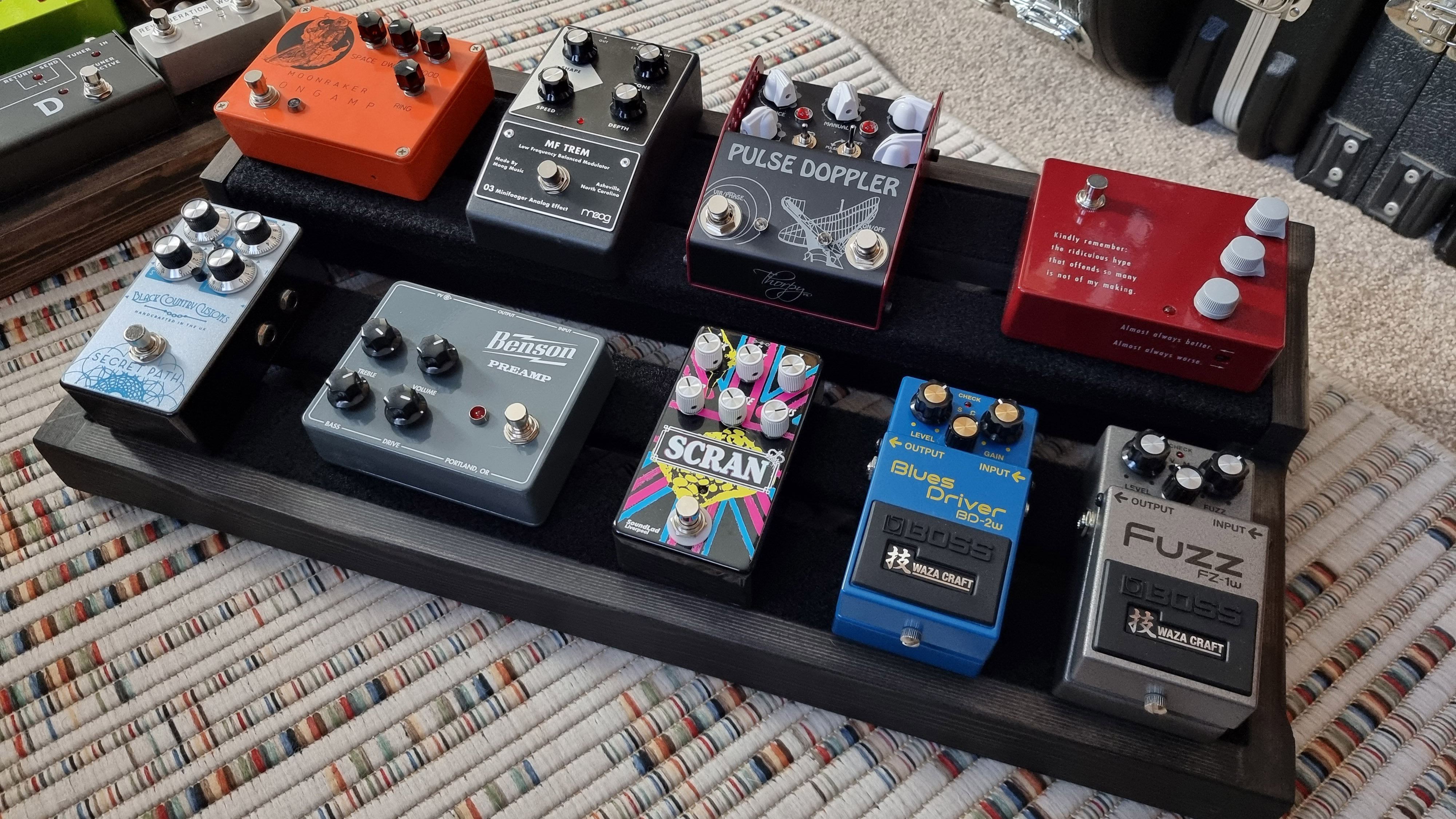
Effects pedals are a bit of an obsession for many guitarists and bass players, and along with the quest for tone comes a need for the perfect pedalboard. Instagram is full of ideas for rigs and it was there, via a recommendation from a player friend, that we discovered the wonderful work of the UK's Marcus D'luxe, aka Marcus Darby.
Marcus is a fellow pedal junkie who took his passion further. He now builds custom 'rustic' wood pedalboards using his skills as a carpenter and has even developed the VertDluxe 'board design; a vertical pedalboard that's proved popular with YouTubers and home players in being an ideal desk and video companion.
We met with chairman of the 'board Marcus to talk about his craft and the custom options he offers players.

What inspired you to start making pedalboards for yourself in the beginning?
"I've played guitar since my teens (not that you'd tell) and started my pedal addiction about ten years back when i made myself a very basic slatted board. Working in construction/carpentry it didn't take much effort and I soon had ideas of how I wanted to pretty it up a bit."
Did some friends then ask you if you'd make some for them?
"Yeah, a lot, mainly from the Instagram community, folks I'd known for a while. Stuart Tate of TateFX is a good friend and had one of my early floor based boards. From there it kind of snowballed."
Want all the hottest music and gear news, reviews, deals, features and more, direct to your inbox? Sign up here.

And you're putting timber to good use that would otherwise be wasted?
"Yes, I tend to use any offcuts produced from my day job where possible. Offcuts that would end up being skipped."
Can you talk us through the kind of options you offer with your pedalboards in terms of styles, colours and sizes?
"There's a basic range but generally speaking it's customisable. The VertDluxe boards come in either 180mm or 360mm velcro widths as standard but I've made some small enough for just one pedal, and on the flip side made a couple that were over two foot long. I also make your standard floor based pedalboard in various sizes.
"Colour-wise there is a range of eight or so on offer but they can be tweaked and also faded effects are available."

How did the idea for the Vert models come about?
"I'd made a couple of pedalboards for myself, regular flat floor based jobbies. Then talking to a couple of friends, the two Dans (Dan of Molyneaux guitars and Dan of Underfluked pedals) and through my own low key YouTubing, the idea of the vertical pedalboard arose for the demo guys, studios, shop displays etc.
"I'm now on the third version of the vertical board which is a bit shorter in height and works better with top mount jacks.
How does the design process work for you going forwards - do you use feedback from players?
"I definitely take on board the feedback from the guys using them.
"The routered detail on the side was an idea to make then a little different from the run of the mill square sided timber pedalboard. That and the stamped name seems to set them apart and have made them recognisable to the masses."





What are the greatest challenges you've encountered so far?
"Time, I work a full time job so only get to make these at weekends.
"Other than that just simple build hurdles like setting out a new design – such as the flip top boards I've been making recently.

Your pedalboards pop up in YouTube videos with various players, do you find the online playing community, and the pedal community especially, to be supportive of each other?
"Henning Pauly (HP42) has a few and was a big help with the development. He pointed out that the early Verts shelf section was a bit big and interfered with the little boss style pedals battery hatch thumb screw. He has a YT video dedicated to the latest iteration."
How important has Instagram been in showcasing your work, and have you in turn discovered other creators through it?
"I feel the community in general is a great place and I for one wouldn't be in this position without it.
"I've met so many new creators through the platform, both in terms of guys creating a physical product and/or generating content. This has led to many in-person meets at guitar shows, workshops etc."
What are your ambitions for the future with the pedalboard building and beyond? We noticed you've built your own guitars for yourself that look great!
"To continue what I'm doing. I'm also looking at offering a slightly more premium product with dovetail joints etc.
"Guitar wise, yes, I've made two thus far with the WhatsApp guidance of Stu (SMP Guitars) during lockdown and I have materials in place to make number three, which will be a semi original offset design."

For more information on Marcus D'Luxe pedalboards visit Instagram

Rob is the Reviews Editor for GuitarWorld.com and MusicRadar guitars, so spends most of his waking hours (and beyond) thinking about and trying the latest gear while making sure our reviews team is giving you thorough and honest tests of it. He's worked for guitar mags and sites as a writer and editor for nearly 20 years but still winces at the thought of restringing anything with a Floyd Rose.